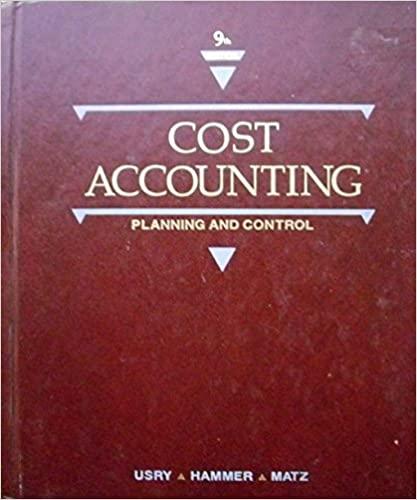Answered step by step
Verified Expert Solution
Question
1 Approved Answer
table [ [ , A , B , Shelby Shelving is a small company that manufactures two types of shelves for grocery stores. Model
tableA Shelby Shelving is a small company that manufactures two types of shelves for grocery
stores. Model S is the standard model; model LX is a heavyduty version.
Shelves are manufactured in three major steps: stamping, forming, and assembly. In the
stamping stage, a large machine is used to stamp ie cut standard sheets of metal into
appropriate sizes. In the forming stage, another machine bends the metal into shape.
Assembly involves joining the parts with a combination of soldering and riveting. Shelbys
stamping and forming machines work on both models of shelves. Separate assembly
departments are used for the final stage of production.
The file Shelby Shelving.xlsx contains relevant data for Shelby. The hours required on each
machine for each unit of product are shown in the range B:C of the Accounting Data
sheet. For example, the production of one model S shelf requires hour on the forming
machine. Both the stamping and forming machines can operate for hours each
month.
Both the stamping and forming machines can operate for hours each month. The
model S assembly department has a monthly capacity of units. The model LX
assembly department has a monthly capacity of only units.
Currently Shelby is producing and selling units of model S and units of model LX
per month. Model S shelves are sold for $ and model LX shelves are sold for $
Shelbys operation is fairly small in the industry, and management at Shelby believes it
cannot raise prices beyond these levels because of the competition. The marketing
department believes that Shelby can sell as much as it can produce at these prices.
The plants engineer suggested that the current production of model S shelves be cut
back. According to him, Model S shelves were sold for $ per unit, but their costs were
$ So they were losing money on each unit. The controller disagreed. He said that the
problem was that the model S assembly department trying to absorb a large overhead
with a small production volume. According to him, the model S units were contributing to
overhead, and they would be worse off with lower production.
Notes on Accounting Data Calculations: The fixed overhead is distributed using
activitybased costing principles. For example, at current production levels, the
forming machine spends hours on model S shelves and hours on model LX
shelves. The forming machine is used hours of the month, of which of the
time is spent on model S shelves and is spent on model LX shelves. The
$ of fixed overhead in the forming department is distributed as $
to model S shelves and $ to model LX
shelves. The fixed overhead per unit of output is allocated as $
for model S and $ for model LX In the calculation of the
standard overhead cost, the fixed and variable costs are added together, so that
the overhead cost for the forming department allocated to a model S shelf is
$ shown in cell G rounded up to $ Similarly, the
overhead cost for the forming department allocated to a model LX shelf is $
shown in cell H rounded down to $
Develop a constrained optimization model for Shelbys problem of allocating the available production capacity
among the two products. Clearly identify the decision variables, resource constraints, and the profit function, paying
particular attention to the units involved. State any assumptions you make and explain why. Assume that assembly for
each model takes one hour.
a Determine the optimal number of shelves that Shelby should produce and the corresponding monthly profit. Show the
corresponding allocation of the available resources, ie how much time in each department should be spent on each
type of shelf. Where are the bottlenecks? Answer: Maximum monthly profit $
b Compare the optimal solution with the one given in the case and the changes that they have proposed. Comment on
their method of allocating the fixed overhead between the two products, and how it has led them to an incorrect
assessment of profitability and product mix.
In answering the following questions, wherever possible, use that to give exact numerical answers, without rerunning the Solver.
c Suppose the company can increase the capacity in any one department at an additional cost of $ per hour due to the
overtime premium and additional energy costs involved. Which department should they expand and by how much?
d Suppose that due to raw material shortages, the material cost for shelf Model S goes up by $ How would that affect
Shelbys production plan and monthly profit?
e Suppose that due to reduced competition, the selling price of Model LX can be raised to $ What effect, if any, would it
have on Shelbys production plan and profit?
can you show each answer on excel?

Step by Step Solution
There are 3 Steps involved in it
Step: 1

Get Instant Access to Expert-Tailored Solutions
See step-by-step solutions with expert insights and AI powered tools for academic success
Step: 2

Step: 3

Ace Your Homework with AI
Get the answers you need in no time with our AI-driven, step-by-step assistance
Get Started


